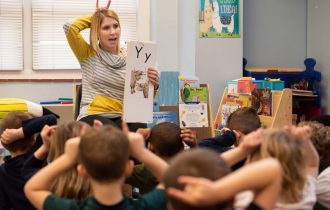Bridging Worlds: The Impact of Cultural Literacy on Cross-Cultural Communication
Introduction: Embracing the Melting Pot
Famous anthropologist and author, Wade Davis, once said, “Other cultures are not failed attempts at being us. They are unique manifestations of the human spirit.” Davis’s quote underscores the richness and diversity that different cultures offer, and it sheds light on the importance of cultural literacy, especially in the context of cross-cultural communication. This article will explore how cultural literacy can enhance our understanding and communication with individuals from diverse cultures, focusing on the role of technology in promoting cultural literacy, and bringing this discussion to life through concrete examples.
Section 1: Understanding Cultural Literacy
Cultural literacy refers to the ability to understand, respect, and appreciate the differences and similarities among cultures. It’s the awareness of cultural norms, values, traditions, and social expectations that exist within a culture different from our own. Cultural literacy allows us to navigate the complexities of cross-cultural communication, reducing misunderstandings and fostering an environment of mutual respect.
As global connectivity increases, cultural literacy is no longer a luxury but a necessity. It equips us with the skills to successfully engage in our increasingly diverse world – be it in our classrooms, workplaces, or social spaces.
Section 2: The Intersection of Technology and Cultural Literacy
In our technologically advanced age, tools and platforms that promote cultural literacy have become widely accessible. These resources have the potential to break down cultural barriers and facilitate effective cross-cultural communication. Some examples include:
- Online Learning Platforms: Websites like Coursera and Khan Academy offer courses on cultural literacy and intercultural communication, enabling learners to understand diverse cultures better.
- Virtual Reality (VR): VR technology provides immersive experiences that can transport users to different cultural settings, enhancing their cultural understanding. For instance, a VR program might enable a user to virtually attend a traditional Japanese tea ceremony or an Indian wedding.
- Language Learning Apps: Applications like Duolingo and Babbel don’t just teach languages; they also impart cultural nuances, idioms, and expressions specific to a culture, promoting cultural literacy.
- Social Media Platforms: Platforms like Facebook, Instagram, and Twitter allow for real-time interaction with people from different cultures. They provide a platform for sharing cultural narratives, traditions, and perspectives.
Section 3: Real-life Examples of Cultural Literacy in Action
To illustrate the impact of cultural literacy on cross-cultural communication, let’s consider the following real-world examples:
- International Business Negotiations: In international business, understanding cultural norms can be crucial. For instance, while direct communication is valued in the U.S., in many Asian cultures, indirect communication is the norm to maintain harmony and avoid potential conflicts.
- Cultural Exchange Programs: Programs like the Fulbright Scholar Program offer opportunities for cultural exchange. These programs promote cultural literacy by immersing participants in foreign cultures, enhancing their ability to communicate effectively with individuals from those cultures.
- Global Collaborative Projects: Many schools and universities around the world are conducting global collaborative projects where students from different countries work together, often leveraging technology. These projects foster cultural literacy, improving students’ ability to communicate cross-culturally.
Section 4: The Way Forward: Cultivating Cultural Literacy
Cultivating cultural literacy requires intentional effort and continued practice. Here are some steps that educators, parents, and individuals can take to enhance cultural literacy:
- Active Learning: Engage in active learning by reading books, watching films, and attending events related to different cultures.
- Travel (if possible): Immersing oneself in a foreign culture is an excellent way to enhance cultural literacy.
- Cultural Exchange: Interact with individuals from diverse cultures to gain firsthand experience of their cultural practices.
- Use of Technology: Leverage the power of technology to access information, learn, and communicate with individuals from different cultures.
Conclusion: The Ripple Effect of Cultural Literacy
In conclusion, cultural literacy plays a pivotal role in enhancing cross-cultural communication. As renowned American author Mark Twain once said, “Travel is fatal to prejudice, bigotry, and narrow-mindedness.” While physical travel may not always be feasible, we can “travel” through the vast landscapes of diverse cultures by enhancing our cultural literacy. In doing so, we can foster a more inclusive, empathetic, and interconnected world.


